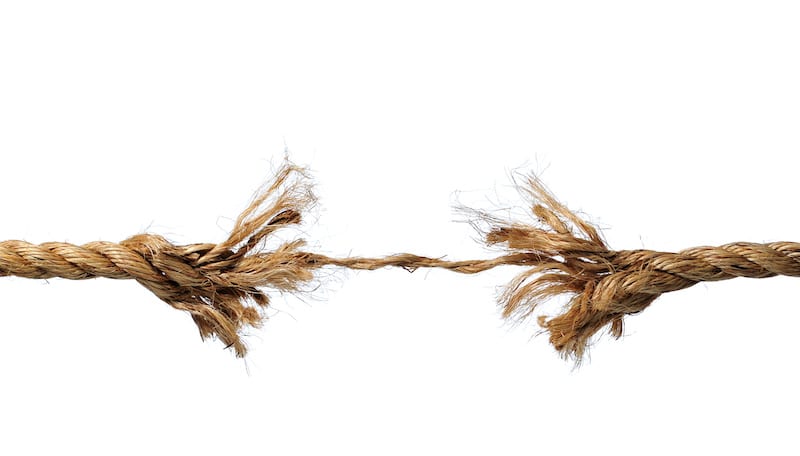How to Take Care of "Bad" Customers for Good
I experienced “bad” customers first hand when I started my career in sales. Focused on honing my negotiation skills, I was then selling Apple and Olivetti computers in the Paris Golden Triangle (one of the city’s wealthiest areas by the Champs-Elysées). I met Mr. P, who will remain anonymous. First, he kept changing his mind about the needed computer configurations and clearly wasn’t listening to me. Second, he was ruthless with our staff and wanted all the attention, but was rarely available for a call. Finally, it took forever for him to pay, and we ended up losing many cycles and profit.
Since then, I’ve been wary of the famous adage “The Customer Is King“.
Yes, “bad” customers exist. However, spotting them isn’t always as easy as in the above story. A lot can shift over time. What used to be your right audience might not be relevant anymore as your strategy evolves. Too many companies realize it when it’s already too late. Undeniably, the vast majority of customers are great. Still, you only need 10% of “bad” customers to ruin your bottom line (and eventually your business).
So, how can you better “select” your customers right from the start? What characteristics will make a great customer for you? Which policy changes do you need to ensure all company’s functions are aligned? Let me share four rules I have seen make a difference and can save significant headaches for all involved, from product teams to sales and customer service.
Rule #1 - Identify your different types of customers

From my days in B-to-C (Business-to-Consumer), I have come to realize that most teams have a different lens for who their customer is. And you know what? They’re all both right and wrong!
In B-to-C, product teams mostly believe that the end-user is the customer. We build products and experiences for that end-user, so he has to be the customer! However, the sales teams working with retail channels consider the retailer (even sometimes the distributor of that retailer) as their customer. I don’t blame them. Without approval from that gatekeeper, your product won’t land on their shelves, and the end-consumer will never see the color of your beautiful product! At the same time, channel marketers tend to focus on the “shopper“, who might actually not be the end-user. It’s especially common as you enter the holiday season. Shoppers can often be “gifters” who try to interpret the desires of the end-consumer they want to please.
So three different teams can have their own view of who the customer is. The same applies to B-to-B (business-to-business) environments. You likely deal with corporate buyers, resellers, and end-users. Whatever your business model, it is critical to clarify which types of customers are involved and have them correctly identified.
Rule #2 - Understand the "tension" between your different customers

Now that you have your different customers well identified, you need to understand where their “wants” intersect. If you create too much tension between them, you might still delight your end-user but irritate your buyer or channel partner. Let’s take a real-life example, I just changed product categories and market:
You have created the perfect video streaming experience. It addresses all the problems that your target end-users expressed in one single device instead of the usual separate camera, microphone, speakers, and lighting equipment. Customer research indicates the shoppers would expect some type of discount from an “all-in-one” solution that is close enough in quality to premium devices sold separately. So you launch at a lower price and know you can afford it, given your more economical cost of production.
The sales team presents the solution to channel partners, who reject it massively. They’re disappointed with the lower profit dollars given the aggressive pricing. Retailers also fear it will impact the existing competing premium solutions’ perceived value, hence reducing the resellers’ profit. Tough situation! If you stick to aggressive pricing, the retailers won’t take your product by fear of losing competitive revenue. But suppose you increase pricing and please your channel. Then, the shoppers will choose competitive solutions instead, and you will not achieve your volume and profit targets.
The moral of the story is that you need to deeply understand each of your “customers” and focus on where the intersection of their “wants” is.
So, the next time you create personas, make sure you have distinct ones between these key players, like a user-persona, a buyer-persona… For more on this topic, you can read my post on persona creation.
Rule #3 - Regularly revisit whether you have the "right" customers

This is where the Pareto Principle comes in (again!). In most cases, 20% of your customers make 80% of your profit. It means you spend a disproportionate amount of time and energy on 80% of customers that only bring 20% of your profit. By “eliminating” the bottom-end, you can reallocate your resources on the most profitable customers.
As painful and heartbreaking as it is, you need to part ways with your least desirable customers. Here are three simple principles to help you make the right assessment:
* Profit: how profitable are your different customers? Do they understand and embrace your value-based pricing (see my other post on strategic pricing) or continuously drag you down, asking for more discounts? Beyond acquisition costs, what are their maintenance costs (how much overhead and technical support do they require?)
* Lifetime Value: which customers tend to come back again and again for upgrades, upsells, cross-grades? Who are the one-shot transaction customers?
* Brand Affinity: are your customers well-respected, and do they match your ideal target audience? Would you be happy to promote them?
Map these three principles to your customer base, and it will become easier for you to assess which customers are the right fit for your business and which ones aren’t.
Rule #4 - As you part ways, be transparent and adjust your policies

Accurately identifying your “bad” customers is a significant step in the right direction. Now you need to be pro-active and let them understand this is not a sustainable situation for you. From experience, I can tell the key here is to be transparent, firm, and not invent new excuses or reasons. The bottom line is to focus on adequately adjusting your policies. A few examples:
Are you concerned some customers abuse your generous customer support? Then, be clear on your service boundaries, and create additional paying tiers. In most cases, it will discourage abuse and might even bring a new source of profit!
Is a class of resellers not profitable enough, with no growth on the horizon and not so well aligned with your brand strategy? You should then adjust your pricing structure and price levels, sending a clear message on how you intend to conduct business. Want to learn more about strategic pricing virtues? You can check my other post on value-based pricing.
I appreciate that reality is often more complicated. You have to deal with legacy contracts, long-term relationships, social media pressure… But none of these complications should prevent you from acting!
In Conclusion: Get ready for some pleasant surprises!
The notion of “bad” customers is all relative. Only a tiny portion of your customer base is likely truly abusive and unfair. Yet, it’s vital to systematically identify your bottom-end customers and act on it. This will eventually save you the time you need to focus on your best customers and enjoy a repeatable and profitable business.
Even better, some of your “bad” customers will actually come back more desirable than ever, as they react and comply with your changes.
You might want to dig further into how to effectively manage all your customer types and optimize profit. Then, The Product Sherpa is here to help! You can drop us a note, or schedule a free exploratory call.

Great article Tanguy! I really like it. Very Detailed. Agreed with you, not every customer is “king”. Knowing how to spot a bad customer is crucial to your bottom line.
Absolutely! Spot the “bad” customers and act on it!